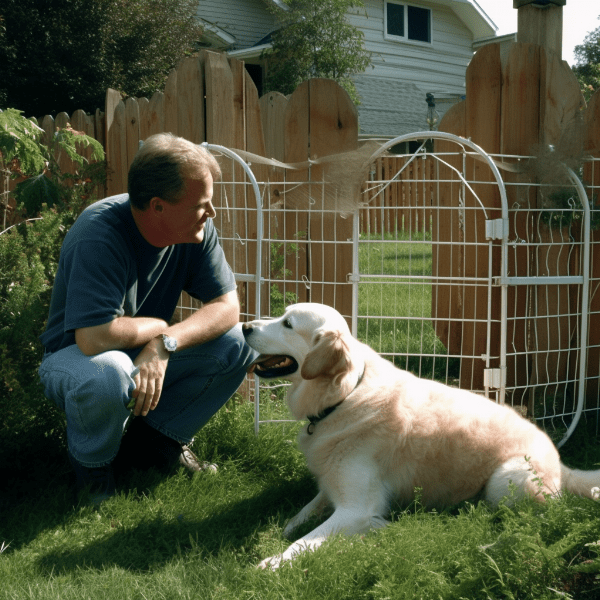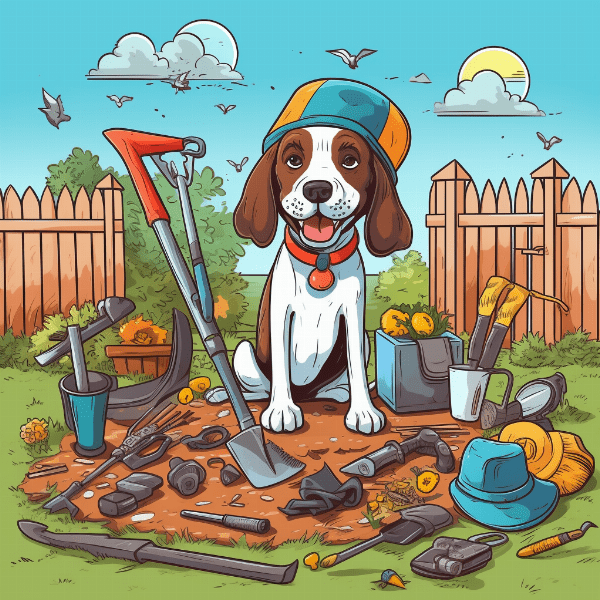Table of Contents
- Why dogs dig under fences?
- Assessing the damage: Is your fence secure?
- Quick solutions to stop dogs from digging under the fence
- Creating a digging pit for your dog
- Using deterrents to prevent digging
- Training your dog to stop digging
- Increasing exercise and stimulation
- Seeking professional help: When to call a trainer or behaviorist
- Ensuring your dog’s safety while outside
- Conclusion: Happy dog, happy yard
Why dogs dig under fences?
Dogs have an inherent need to explore and investigate their surroundings, and digging is a natural behavior for them. However, if your dog is digging under the fence, it may indicate an underlying issue that needs to be addressed.
Curiosity
Curiosity is one of the most common reasons why dogs dig under fences. Your dog may be trying to escape to explore the outside world, or they may be attracted to a scent that they’ve picked up from the other side of the fence.
Boredom and frustration
Dogs that are left alone for extended periods of time or lack stimulation may become bored and frustrated, leading them to dig under the fence. This behavior can be a sign that your dog needs more exercise, attention, and enrichment.
Anxiety and fear
Dogs that suffer from anxiety or fear may also dig under the fence in an attempt to escape. This behavior can be triggered by loud noises, such as thunderstorms or fireworks, or by the presence of other animals or people outside the fence.
Territorial behavior
Dogs are territorial animals, and they may view the area outside the fence as part of their territory. If they perceive a threat or intruder on their territory, they may dig under the fence to confront or chase them away.
Understanding why your dog is digging under the fence is the first step in addressing the behavior. By identifying the underlying cause, you can develop a targeted plan to prevent your dog from digging and keep them safe and happy in your yard.

Assessing the damage: Is your fence secure?
Before you can stop your dog from digging under the fence, it’s essential to assess the damage and determine whether your fence is secure enough to prevent your dog from escaping.
Check for gaps and holes
Inspect your fence for any gaps or holes that your dog could squeeze through or dig under. Look for areas where the fence meets the ground, and check for loose or missing boards or panels. Even small gaps can be enough for a determined dog to escape.
Evaluate the height
Check the height of your fence to ensure that it’s tall enough to prevent your dog from jumping over. If your dog is a skilled jumper, you may need to add height to your fence by installing additional panels or extending the height with fencing material.
Reinforce weak points
Reinforce any weak points in your fence by adding additional support, such as brackets or posts. You may also need to replace any damaged or rotting wood or fix any loose or wobbly panels.
Consider adding an underground barrier
By thoroughly assessing your fence, you can identify any weak points and take steps to reinforce or repair them to prevent your dog from escaping. A secure fence is the first line of defense in keeping your dog safe and contained in your yard.
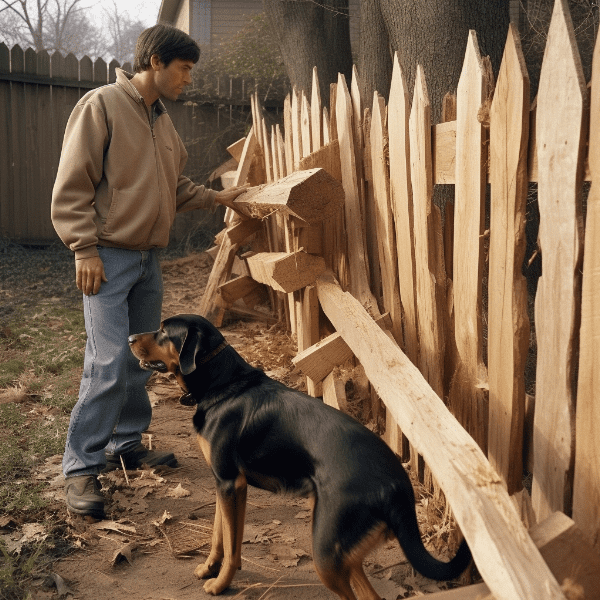
Quick solutions to stop dogs from digging under the fence
Block the view
Dogs are often attracted to what’s on the other side of the fence, so blocking their view can help to reduce their curiosity and discourage digging. Use privacy screens, plant shrubs or trees, or install lattice panels to block your dog’s view of the outside world.
Use deterrents
There are several types of deterrents you can use to discourage your dog from digging under the fence. Bury rocks or chicken wire at the base of the fence, or use a commercial dog repellent spray to make the area unappealing to your dog. Some dogs may also be deterred by the smell of citrus, vinegar, or cayenne pepper.
Create a digging pit
Some dogs enjoy digging, and providing them with a designated digging pit can redirect their behavior and prevent them from digging under the fence. Fill a designated area with soft soil, sand, or mulch and encourage your dog to use that area for digging.
Increase exercise and stimulation
Dogs that are bored or lack stimulation may resort to digging as a way to alleviate their frustration. Increase your dog’s exercise and playtime to provide them with an outlet for their energy and reduce their desire to dig.
Provide mental stimulation
Mental stimulation, such as puzzle toys or training games, can also help to reduce boredom and prevent digging behavior. Provide your dog with plenty of opportunities to engage their mind and learn new skills.
By using these quick solutions, you can effectively deter your dog from digging under the fence and keep them safe and happy in your yard.

Creating a digging pit for your dog
If your dog loves to dig, providing them with a designated digging pit can redirect their behavior and prevent them from digging under the fence.
Choose the location
Select a location in your yard where your dog is likely to dig, such as a shady area or near a tree. Choose an area that’s away from any plants or other landscaping features that you want to protect.
Prepare the pit
Dig a hole in the designated area that’s big enough for your dog to comfortably dig in. The depth of the hole will depend on the size of your dog, but aim for a depth of at least 12-18 inches.
Fill the pit
Fill the hole with soft soil, sand, or mulch, and mix in some treats or toys to encourage your dog to dig in the pit. You can also bury bones or toys in the pit for your dog to discover and excavate.
Encourage your dog to use the pit
Encourage your dog to use the digging pit by rewarding them with treats or praise when they dig in the designated area. You can also bury toys or treats in the pit to make it more enticing.
Monitor your dog’s behavior
Monitor your dog’s behavior and redirect them to the digging pit if they start digging in other areas of the yard. With consistent reinforcement and encouragement, your dog will learn to associate the digging pit with positive behavior and reduce their desire to dig under the fence.
Creating a designated digging pit for your dog can be a simple and effective way to redirect their behavior and prevent them from digging under the fence. With some preparation and encouragement, you can provide your dog with a safe and fun place to indulge their digging instincts.
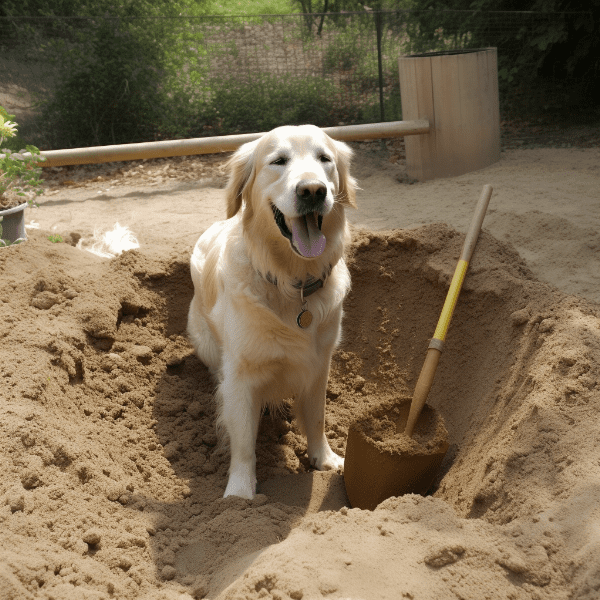
Using deterrents to prevent digging
Bury chicken wire or rocks
Bury chicken wire or rocks at the base of the fence to create a barrier that’s difficult for your dog to dig through. Bury the barrier at least one foot deep and extend it several inches out from the fence to prevent your dog from digging around it.
Use commercial repellents
Commercial dog repellent sprays can be an effective way to deter your dog from digging under the fence. These sprays typically contain a bitter or unpleasant smell that’s unappealing to dogs.
Try natural repellents
Some dogs may be deterred by the smell of natural repellents, such as citrus, vinegar, or cayenne pepper. You can create your own repellent spray by mixing one of these ingredients with water and spraying it on the ground near the fence.
Use motion-activated deterrents
Motion-activated deterrents, such as sprinklers or noise machines, can startle your dog and discourage them from digging under the fence. Place the deterrents near the fence line or in areas where your dog is most likely to dig.
Consider an electronic fence
An electronic fence can be an effective way to prevent your dog from escaping without the need for a physical barrier. These fences use a collar that emits a warning beep or shock when your dog gets too close to the boundary line.
By using these deterrents, you can effectively discourage your dog from digging under the fence and keep them safely contained in your yard. Be sure to choose a deterrent that’s safe and appropriate for your dog’s age and temperament.
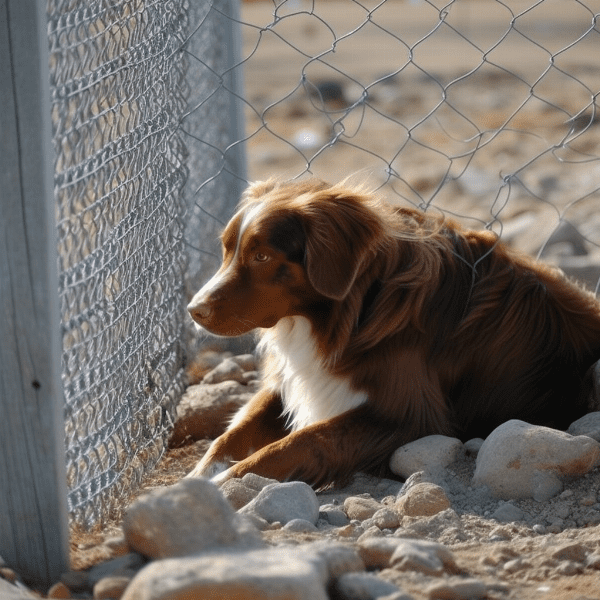
Training your dog to stop digging
Training your dog to stop digging under the fence can be an effective way to prevent the behavior and keep them safely contained in your yard.
Identify the trigger
Identify the trigger that’s causing your dog to dig under the fence, such as boredom or anxiety. Once you’ve identified the trigger, you can develop a training plan that addresses the underlying cause.
Teach a “leave it” command
Teaching your dog a “leave it” command can be helpful in preventing digging behavior. When your dog starts to dig, use the command to get their attention and redirect them to a more appropriate activity.
Provide positive reinforcement
Provide positive reinforcement when your dog exhibits desired behavior, such as staying away from the fence or using the designated digging pit. Reward your dog with treats, praise, or playtime to encourage them to repeat the behavior.
Correct unwanted behavior
Correct unwanted behavior, such as digging under the fence, with a firm “no” or “stop” command. Be sure to correct the behavior as soon as it occurs, and redirect your dog to a more appropriate activity.
Supervise your dog
Supervise your dog when they’re outside to prevent them from digging under the fence. Use a leash or tether to keep your dog within a designated area, and provide plenty of toys and activities to keep them entertained.
Be consistent
Consistency is key when training your dog to stop digging under the fence. Stick to a regular routine and reinforce positive behavior consistently to help your dog learn what’s expected of them.
By using these training techniques, you can effectively prevent your dog from digging under the fence and keep them safely contained in your yard. Remember to be patient and consistent, and seek the help of a professional trainer or behaviorist if needed.
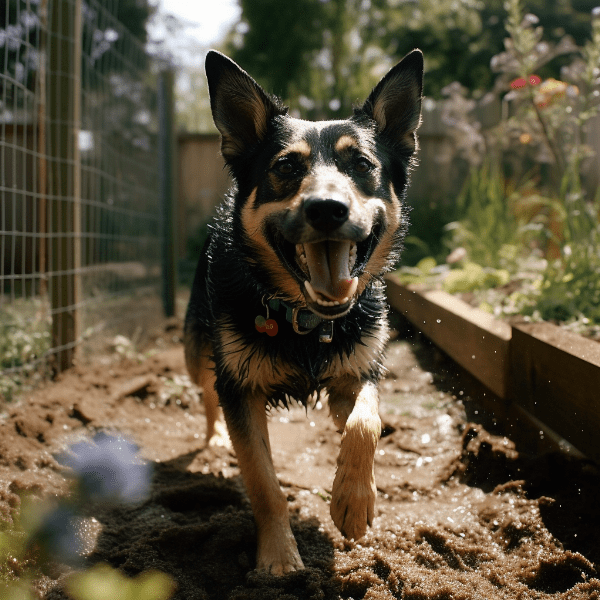
Increasing exercise and stimulation
Increasing your dog’s exercise and stimulation can be an effective way to prevent digging behavior and keep them happy and healthy.
Provide regular exercise
Provide your dog with regular exercise to burn off excess energy and reduce boredom. Take your dog for walks, play fetch or tug-of-war, or engage in other activities that your dog enjoys.
Incorporate training sessions
Incorporate training sessions into your dog’s exercise routine to provide mental stimulation and reinforce positive behavior. Teach your dog new tricks or work on obedience training to keep their mind engaged.
Use interactive toys
Use interactive toys, such as puzzle feeders or treat-dispensing toys, to provide your dog with mental stimulation and prevent boredom. These toys can keep your dog occupied and provide a challenge that can help to reduce the desire to dig under the fence.
Provide opportunities for socialization
Socialization with other dogs and people can also be beneficial in preventing digging behavior. Take your dog to a dog park or arrange playdates with other dogs to provide socialization opportunities.
Rotate toys and activities
Rotating toys and activities can keep your dog engaged and prevent boredom. Provide a variety of toys and activities and rotate them regularly to keep your dog interested and stimulated.
By increasing your dog’s exercise and stimulation, you can reduce the desire to dig under the fence and prevent boredom-related digging behavior. Remember to provide a variety of activities and seek the help of a professional trainer or behaviorist if needed.
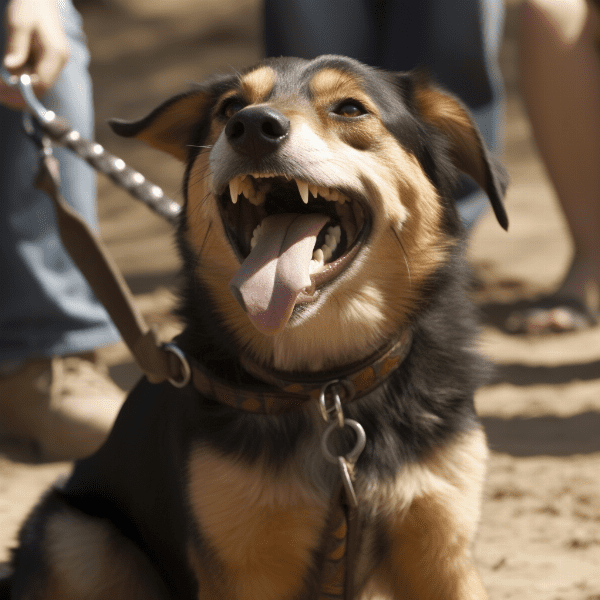
Seeking professional help: When to call a trainer or behaviorist
If your dog continues to dig under the fence despite your efforts to prevent the behavior, it may be time to seek the help of a professional trainer or behaviorist.
Signs that professional help is needed
Signs that indicate you may need professional help include persistent digging behavior, destructive behavior, and signs of anxiety or fear. If your dog’s digging behavior is causing damage to your yard or posing a safety risk, it’s important to seek help as soon as possible.
Finding a trainer or behaviorist
Finding a reputable trainer or behaviorist can be an important step in addressing your dog’s digging behavior. Look for a professional with experience in addressing digging behavior and positive reinforcement training techniques.
Developing a behavior modification plan
A professional trainer or behaviorist can work with you to develop a behavior modification plan that addresses the underlying cause of your dog’s digging behavior. This plan may include training exercises, environmental changes, and management strategies to prevent digging.
Medication or other interventions
In some cases, medication or other interventions may be necessary to address your dog’s digging behavior. A veterinarian or behaviorist can help to determine if medication is appropriate and develop a plan for administering it.
Ongoing support
Ongoing support from a professional trainer or behaviorist can be important in maintaining the progress made in addressing your dog’s digging behavior. Regular check-ins and training sessions can help to reinforce positive behavior and prevent relapse.
By seeking the help of a professional trainer or behaviorist, you can develop a targeted plan to address your dog’s digging behavior and keep them safely contained in your yard. Remember to be patient and consistent, and seek help as soon as possible if you’re struggling to manage your dog’s behavior on your own.

Ensuring your dog’s safety while outside
When your dog is outside, it’s important to take steps to ensure their safety and prevent them from escaping or getting into other dangerous situations.
Supervision
Supervision is key in ensuring your dog’s safety while outside. Be present and alert when your dog is outside and keep an eye on them at all times. Avoid leaving your dog outside unsupervised, especially if they have a history of escaping or digging under the fence.
Use a leash or tether
Use a leash or tether to keep your dog within a designated area and prevent them from wandering off or escaping. Be sure to use a leash or tether that’s appropriate for your dog’s size and strength, and supervise them closely while tethered.
Provide shade and water
Provide shade and plenty of fresh water for your dog when they’re outside. Heatstroke and dehydration can be dangerous and even life-threatening for dogs, so be sure to provide adequate protection from the sun and heat.
Secure the perimeter
Ensure that your fence is secure and free of gaps or holes that your dog could escape through. Consider installing an electronic fence or adding additional barriers to prevent your dog from escaping.
Remove hazards
Remove any hazards from your yard that could pose a danger to your dog, such as toxic plants, sharp objects, or hazardous chemicals. Keep your yard free of debris and ensure that any tools or equipment are safely stored away.
ID tags and microchipping
Ensure that your dog has up-to-date ID tags and microchipping in case they do escape. This can increase the chances of your dog being returned to you if they’re found by someone else.
By taking these steps to ensure your dog’s safety while outside, you can prevent escape and reduce the risk of injury or other dangerous situations. Remember to supervise your dog closely and take action immediately if you notice any signs of distress or unusual behavior.

Conclusion: Happy dog, happy yard
Preventing your dog from digging under the fence can be a frustrating and challenging experience, but with the right strategies and tools, it’s possible to keep your dog safely contained and happy.
Importance of identifying the cause
Identifying the underlying cause of your dog’s digging behavior is key to developing an effective solution. Whether it’s boredom, anxiety, or a lack of exercise, understanding the root cause can help you choose the right strategies to address the problem.
Multiple solutions to try
There are many solutions to try when it comes to preventing your dog from digging under the fence. From creating a designated digging pit to using deterrents and increasing exercise and stimulation, there are a variety of options to suit your dog’s personality and needs.
Professional help may be necessary
If your dog’s digging behavior persists despite your efforts to prevent it, it may be necessary to seek the help of a professional trainer or behaviorist. They can provide targeted solutions and ongoing support to help you manage your dog’s behavior.
Safety is a top priority
Above all, it’s important to prioritize your dog’s safety and well-being when they’re outside. Ensure that they’re supervised, provide plenty of shade and water, and remove any hazards or dangerous objects from your yard.
By taking these steps and exploring the various solutions available, you can prevent your dog from digging under the fence and keep them safely contained in your yard. Remember, a happy dog makes for a happy yard.
